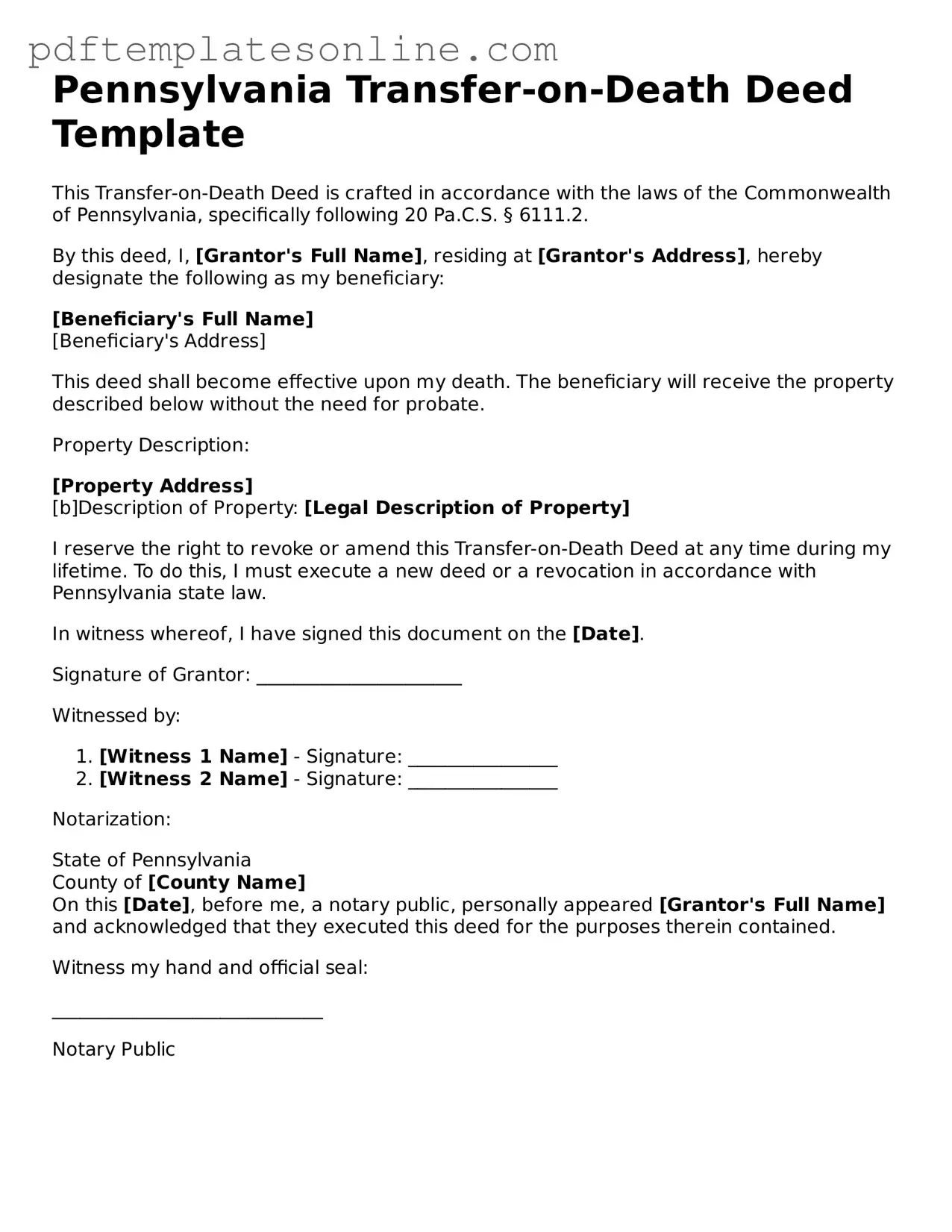Filling out a Transfer-on-Death Deed (TODD) form in Pennsylvania can be a straightforward process, but many people make common mistakes that can lead to complications down the road. One of the most frequent errors is not properly identifying the property. It’s crucial to provide a complete and accurate legal description of the property being transferred. Omitting details or using vague language can create confusion and may invalidate the deed.
Another mistake often seen is failing to include all necessary signatures. In Pennsylvania, both the owner and the designated beneficiary must sign the deed. If one signature is missing, the deed may not be recognized. It’s essential to ensure that everyone involved understands their role and completes their part of the document.
People sometimes overlook the importance of having the deed notarized. A Transfer-on-Death Deed must be notarized to be legally binding. Without this step, the document may not hold up in court or during the transfer process. Always check that a notary public is present to witness the signing.
Additionally, many individuals neglect to record the deed with the county recorder of deeds. While completing the form is a significant step, failing to record it means that the transfer may not be recognized after the property owner’s death. Recording the deed ensures that the beneficiary's rights are protected and that the transfer is documented in public records.
Another common pitfall is not considering the implications of the TODD on estate taxes. Some people mistakenly believe that a Transfer-on-Death Deed avoids all tax implications. However, depending on the value of the property and other factors, taxes may still apply. Consulting with a tax professional can help clarify these potential issues.
People often forget to communicate their intentions with family members. Not discussing the existence of a Transfer-on-Death Deed can lead to confusion and disputes among heirs. Open communication can prevent misunderstandings and ensure that everyone is on the same page regarding property distribution.
Another mistake involves not updating the deed after significant life changes. If the beneficiary’s situation changes—such as marriage, divorce, or the birth of a child—the deed may need to be revised. Keeping the document current is essential to reflect the owner's wishes accurately.
Some individuals fail to consider the impact of joint ownership on the Transfer-on-Death Deed. If the property is jointly owned, the deed may not work as intended. Understanding how joint ownership affects the transfer is vital to avoid unintended consequences.
Lastly, many people underestimate the importance of seeking legal advice. While the form may seem simple, the implications of filling it out incorrectly can be significant. Consulting with a legal expert can provide clarity and ensure that the deed serves its intended purpose without complications.
